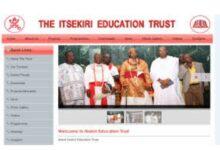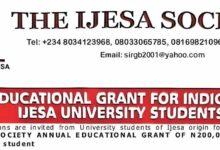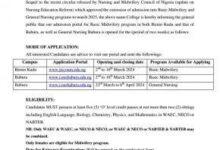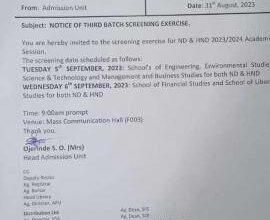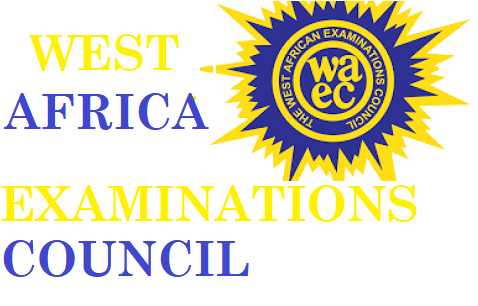
WAEC Syllabus for Salesmanship
WAEC Syllabus for Salesmanship. WAEC Syllabus for Salesmanship is available for all candidates who want to participate in the examination. The West African examination council (WAEC) has officially introduced a syllabus that will guide all the WAEC candidates who wish to write the WAEC examination this year. For a very successful WAEC Salesmanship examination for this year, you need to check out the available areas of concentration. It has been divided into sections with chapters, followed by the topics to be covered in preparation for the exams. In the WAEC Syllabus for Salesmanship, you will also see the format of how the WAEC Salesmanship questions will be presented. Jamb form
There are 2 sections to answer questions from. Paper 1 is Objective and paper 2 contains essay questions and paper 3 is practical. Where paper one (1) carries 50 minutes for 20 marks.; paper two (2) carries 2 hours for 80 marks
👉 Relocate to Canada Today!
Live, Study and Work in Canada. No Payment is Required! Hurry Now click here to Apply >> Immigrate to Canada
This WAEC syllabus is for both the O’level WAEC and General Certificate Examination (GCE) candidates. Final year students in the senior secondary school level and external candidates are eligible to make use of this syllabus and prepare ahead of the examination. WAEC Syllabus for Salesmanship
See the full detailed information concerning the WAEC Salesmanship Syllabus below.
SCHEME OF EXAMINATION
There will be two papers, Paper 1 and Paper 2 – both of which will constitute a composite paper to be taken at one sitting.
PAPER 1: Will consist of forty (40) multiple-choice questions, all of which are to be answered in fifty (50) minutes for 20 marks.
PAPER 2: Will consist of seven (7) essay questions out of which candidates will be required to answer any five (5) for eighty (80) marks. The Paper will last 2 hours.
DETAILED SYLLABUS
| S/N | CONTENTS | TOPICS AND NOTES |
| 1. | PRINCIPLE OF SALESMANSHIP | A. Introduction To Salesmanship:👉 Relocate to Canada Today!Live, Study and Work in Canada. No Payment is Required! Hurry Now click here to Apply >> Immigrate to Canadai. Definition of salesmanship. ii. History of salesmanship. iii. Development of salesmanship in Nigeria iv. Importance of salesmanship.
B. Concept Of Salesmanship: i. Explanation of basic terms in salesmanship; (a) Selling, (b) Consumer satisfaction, (c) Profit maximization. ii. The meaning and application of the concept of salesmanship. iii. The objectives of the salesman to; (a) the company, (b) Himself, (c) Customer,
C. Characteristics Of A Salesman- Motivation, Friendliness, Confidence, Persuasiveness and Politeness.
D. Functions Of A Salesman to: i. Customers, ii. Company, iii. Government, iv. Public or its environment.
E. Salesmanship And Marketing: i. The relationship between salesmanship and marketing, ii. The differences between salesmanship and marketing, iii. The skills needed in salesmanship.
F. Job/ Career Opportunities In Salesmanship: i. Relevance of salesmanship as a course of study ii. Self reliance/employment G. Types Of Salesman: i. Industrial Salesman, ii. Sales Representative/ marketing Representative iii. Retail salesman, iv. Wholesale Salesman, v. Functions of each type. |
| 2. | SALES MANAGEMENT | A. Sales management: i. Definition of sales management, ii. Roles and techniques of a sales manager, iii. Sales decisions, iv. Factors affecting sales, v. Company objectives and sales force decision, vi. Roles of sales force.
B. Sales Forecasting: i. Definition of sales forecast, ii. Methods of sales forecasting, iii. Uses and users of sales forecasting, iv. Advantages and Disadvantages of Sales forecasting, v. Meaning of market survey, vi. Importance of market survey to salesman and producer.
|
| 3. | ADVERTISING AND SALES PROMOTION | A. Advertising:
i. Definition, ii. Types of advertising iii. Types of advertising media, iv. Advantages and disadvantages v. Reasons for advertising to the company and the salesman.
B. Communication Process: i. Definition, ii. Means, iii. Importance of communication to salesman. iv. Barriers in communication.
C. Branding And Packaging: i. Definition of Branding and Packaging, ii. Types, iii. Importance, iv. Advantages and disadvantages.
D. Promotion: i. Definition, ii. Types iii. Sales Incentives (a) Gift items, (b) Discounts- Trade/ Cash, seasonal, quantity iv. Importance of promotion to salesman v. Advantages and disadvantages of promotion.
|
| 4. | PRICING AND DEMAND | A. Pricing: i. Definition, ii. Importance of price fixing. iii. Methods/Strategies used in price determination, iv. Advantages and disadvantages of price fixing.
v. Effect of price changes and customers behaviour vi. Problems of pricing. B. Demand: i. Meaning and types, ii. Factors affecting demand, iii. Laws of demand, iv. Effects of a change in demand, v. Market forces and pricing.
C. Cost Base: i. Definition of cost, ii. Types of cost, iii. Differences between types of cost. iv. Determinant of cost, v. Theory of cost vi. Analysis/ Calculation of cost and profit.
D. Discounts: i. Definition, ii. Types, iii. Importance and reasons for giving discounts to customers, iv. Differences between the various types of discounts.
|
| 5. | CONSUMER BEHAVIOUR | A. Consumer:
i. Definition, ii. Meaning of consumer market, iii. Meaning of consumer behavior, iv. Factor affecting consumer buying behavior v. Types of buying decision,
B. Decision Process: i. Meaning, ii. Relationship between decision process and sales, iii. Method of decision process, iv. Hierarchy of needs (a) Psychological needs, (b) Sociological needs, v. Factor affecting consumer decision making vi. Effect of consumer decision on sales, vii. Reasons for consumer decision viii. Problems associated with consumer decision process.
C. Environmental Factors Affecting Consumer Behaviour: i. Sociological factors: (a) Urban and Rural community, (b) Family income, (c) Occupation, (d) Education, (e) Age, (f) Sex, (g) Race/ Nationality, (h) Religion/culture, ii. Characteristics of a conventional market, iii. Customer attitudes and behavior.
D. Corporate Buying Behaviour: i. Meaning of Corporate/industrial buyer ii. Factors that influence corporate/industrial buying behaviour: (a) Quantity, (b) Quality, (c) Sources, (d) Pricing, (e) Delivery time.
E. Major Sale Influence: i. Product quality, ii. Price in relation to quality, iii. Factors that stimulate sales, iv. Promotion influencing sales v. Corporate image vi. Differences between price, product and promotion. |
| 6 | DISTRIBUTION |
A. Channels of Distribution: i. Definition of distribution and channels of distribution, ii. Various channels of distribution, iii. Advantages and disadvantages of each channels of distributions iv. Problems, v. Factors affecting choice of channels distribution. C. Retailer: i. Definition, ii. Functions iii. Advantages of retailership to (a) The producer (b) The customer
D. Wholesaler: i. Definition, ii. Types, iii. Functions to (a) The producer, (b) The consumer, iv. Advantages and disadvantages of wholesale trade
E. Warehousing: i. Meaning, ii. Types, iii. Advantages and Disadvantages.
F. Consumer Co-operative Societies: i. Definition, ii. Types, iii. History of consumer co-operative societies, iv. Functions of co-operative society to their member and the economy. v. Advantages and disadvantages.
|
| 7. | INTERNATIONAL TRADE | A. Export trade and Import Trade:
i. Definitions, ii. Types, iii. Advantages and disadvantages iv. Role of a salesman in import and export trade, v. Differences between import trade and export trade. vi. Barriers to international trade.
B. Basic concepts and documents used in import and export trade: i. Definition of documents; ii. Types of documents; iii. Uses of each document; iv. Examples of the document; v. Explanation of the concepts: (a) Principle of comparative advantages, (b) Terms of trade, (c) Terms of payment, (d) Balance of trade and Balance of payment, vi. Differences between Balance Trade and Balance of payment.
|
| 8. | ENTREPRENEURSHIP AND FINANCE IN SALESMANSHIP | A. Concept Of Entrepreneurship In Salesmanship:
i. Definition of entrepreneur and entrepreneurship, ii. Differences between entrepreneurship and entrepreneur, iii. Types of entrepreneur, iv. Objectives of an entrepreneur, v. Roles and Qualities of an entrepreneur vi. The ways a salesman can be an entrepreneur, vii. Problems of entrepreneurship, viii. Advantages of entrepreneurship.
B. Finance In Salesmanship: i. Meaning of finance, ii. Uses and importance of finance, iii. Sources of finance to a salesman and an entrepreneur, iv. Definition of financial Institutions v. Types of financial institutions vi. Role of financial institutions to salesman and entrepreneur
|
SUGGESTED TEXTBOOKS
- Basic Marketing- McCarthy Jerome, E. , William Perreault Jr.
- Marketing – G. B. Giles ( The M & E hand book services)
- Consumer Behaviour – Prof. Achumba ( University of Lagos)
- Fundamentals of Selling – Charles M. Futrell.
Check and Confirm: How much is Dollar to Naira Pounds to Naira Rate Today
